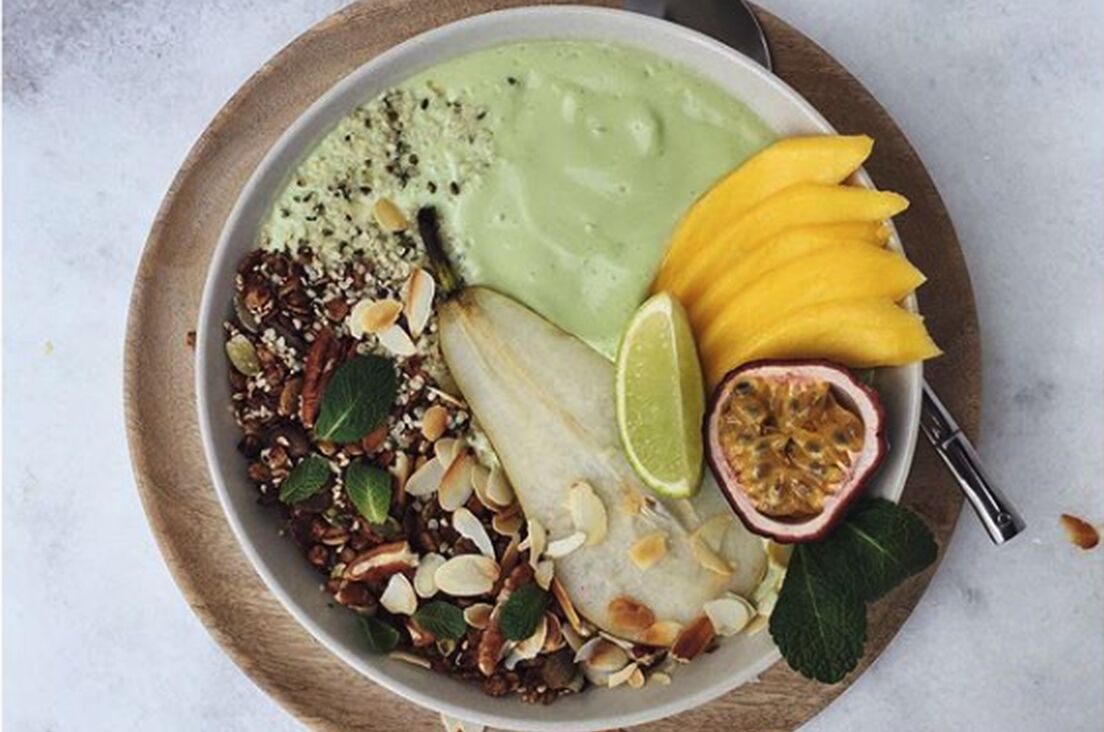
Did you know that almost 1 of every 7 Dutch citizens has lactose intolerance? No wonder more and more people are looking for tasty alternatives. What exactly is lactose intolerance all about and what are the symptoms involved? Also we will be sharing which food you’d better leave aside, and give you some interesting alternatives.
WHAT IS LACTOSE?
Lactose is the name of a chemical connection that occurs in mammals’ milk (including humans). In the Netherlands, lactose is also known as ‘milk sugar’.
WHAT IS LACTOSE INTOLERANCE?
In order to digest lactose, we need the enzyme called lactase. It is produced in the small intestinal wall. If no or in case insufficient lactase is produced, we will be unable to properly digest the lactose that exists in our food. And so it ends up in the colon in undigested form. The bacteria in the colon will start ‘fermenting’ the lactose.
IS LACTOSE INTOLERANCE A COMMON THING?
It is. In the Netherlands about 2.5 million people have it (almost 1 in 7). In Northern Europe 5% of the population has a lactose intolerance, compared to as much as 90% in Arica and Asia.
Being intolerant to lactose should not come as a surprise, really. Among mammals, in fact we are the only creatures consuming milk after we have been nursed. We do stop taking breast milk, just like the other animals, however we continue to consume other animals’ milk. There is no mammal that will drink the milk of any other animal. So basically lactose intolerance is a very natural process. If an animal or a human being stops consuming breast milk, then there is no need producing lactase. Lactase helps break down lactose inside the body. We continue to produce it in the first years of our existence but after that, production will fade or disappear which is a very normal thing. So there is a every chance you were perfectly able to digest lactose, however you started having complaints as you became older.
LACTOSE INTOLERANCE SYMPTOMS
Lactose intolerance symptoms will usually occur within thirty minutes after you have consumed a product that contains lactose. Symptoms include: stomach pain, nausea, bloating, cramps, flatulence and diarrhoea.
PRODUCTS YOU’D BETTER SKIP
Does any of the above symptoms sound familiar? Well then maybe you should (temporarily) avoid lactose products. Milk is used in a lot of food, so always make sure you check the list of ingredients. Tip: lactose is always mentioned in bold on the list of ingredients or allergens.
MILK
By milk I mean all dairy products: fresh milk, long-life milk, whole milk, skimmed milk and milk powder. Milk powder is often added to ready-to-eat products.
MILL-DERIVED PRODUCTS
Products made from milk. Like (drinking) yoghurt, buttermilk, dressings with yoghurt, custard, cottage cheese, crème fraiche, pudding, curd cheese and chocolate milk.
BREAD AND PASTRIES
Pastries contain lactose in most cases. Examples include: currant bread, croissants, coffee rolls, brioche, naan bread, but also cheese baguettes, cheese rolls, pizza and sandwich, muffins, pies, cupcakes, brownies, pancakes, crepes and waffles.
ICE CREAM
Melk is the basic ingredient of many kinds of (soft serve) ice cream.
WHEY DRINKS AND WHEY POWDER
Whey is a by-product of the cheese-making process and so it contains lactose. Soft drinks containing whey are Rivalla and Taksi. Whey powder is used in many foods like Cup-a-Soup, in different chocolate brands including Cote d’Or, Pringles chips, in biscuits and also as a dietary supplement in shakes consumed by athletes.
CHEESE
Cheese in all shapes and sizes is made from milk, and so it contains lactose.
DAIRY BUTTER
Butter is made from milk, so better leave it aside.
MEDICATION
Some medication, especially capsules, might contain lactose. It is used as a shell and has no medical purpose whatsoever.
PRODUCTS YOU CAN EAT
Yes, they DO exist, although you might be a little bit discouraged having read the list of all the stuff you’d better give up. You can go for lactose-free dairy products. Or even better: why not embrace plant-based food which is not only great for your health, but also you will be serving the animals and the environment. Find out why here. To make things easy on you below I have divided lactose-free products into the categories: breakfast, lunch, snacks and dinner.
BREAKFAST
A plant-based alternative to yoghurt like Almond Start or Coco Start. Soy yoghurt is another great option. Or you can start the day with some oatmeal, made from vegetable milk (e.g. soy, rice, coconut or almond milk). Add some lovely fresh fruit. If you’re not in a hurry why not make yourself some pancakes or a smoothie bowl. Or if you prefer a cappuccino, then oat and soy milk will give you the best foam.

LUNCH
Wholemeal and brown bread is generally lactose-free. If you’re craving for some sweet spreads I would recommend peanut butter, caramelised biscuit spread, marmalade, apple syrup and dark chocolate sprinkles. But if you prefer savoury toppings, options would include avocado, different kinds of hummus, vegetable spreads, muhammara and tahini. Can’t give up on cheese? Today plant-based cheese is available at specialist stores like Ekoplaza and Marqt. Instead of (dairy) butter you might wanna go for vegetable margarine.
SNACKS
Go for (unsalted) nuts, naturel crisps, popcorn, dark chocolate and sorbet or our Coco Frost and Almond Frost.
DINNER
When it comes to sauces and soups, you might want to use vegetable single cream based on soy and rice. Nutritional yeast flakes make a perfect substitute to savoury cheese scattered over your pasta meal. To add some bite, sour and salty ingredients will be perfect like olives, capers, artichoke hearts and sundried tomatoes.
HOMEMADE
It is the only way to know for sure that you are not getting any lactose into your system. Besides, it is more tasty and a lot healthier. Prepare your own soups, salads, pizzas and forget about those ready-to-eat meals.
Source: Groentegroente.nl, Optimalegezondheid.com, Maag Lever Darm Stichting



